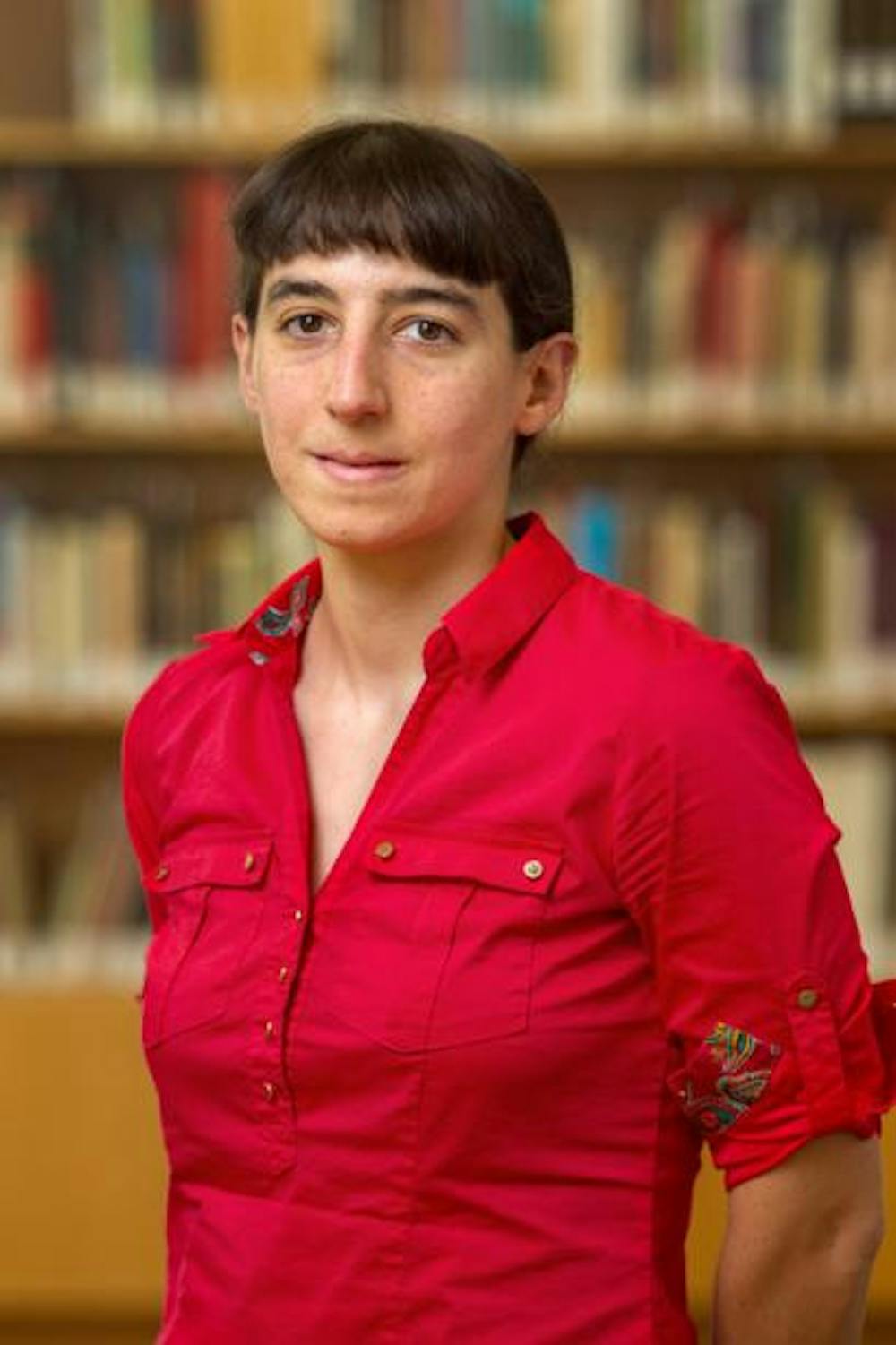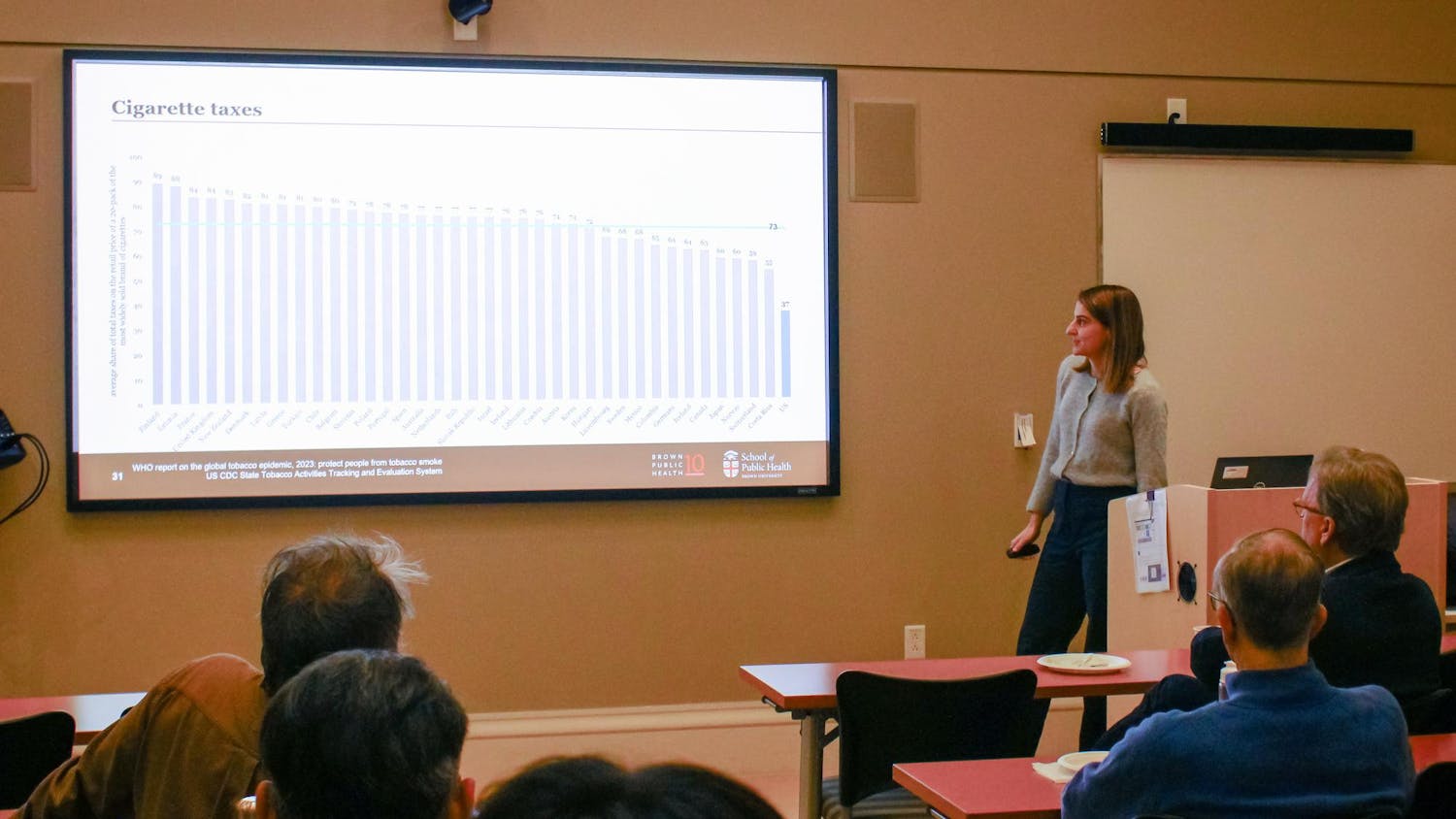Brenda Rubenstein ’07, assistant professor of chemistry, was recently named to the Talented 12 Class of 2019. This exclusive distinction is given to researchers in varying chemical disciplines and from varying backgrounds to highlight their early-career work.
Rubenstein was also recently awarded a Sloan Fellowship — a $70,000 grant given to researchers mainly in the fields of physical science “in recognition of distinguished performance and a unique potential to make substantial contributions to their field,” according to the Alfred P. Sloan Foundation’s website.
The Talented 12 program started in 2015 as a way to highlight up-and-coming researchers. While the Nobel Prize acknowledges those at the peak of their career, the Talented 12 award signals to people that “this is someone you should be watching,” said Lisa Jarvis, Chemical and Engineering News senior correspondent.
Rubenstein received this award for her research in stochastic electronic structure; stochastic refers to the random processes researchers use to calculate quantum numbers and represent systems of electrons. A quantum number represents a value of a given property of a subatomic particle. Through her research, Rubenstein tries to refine a particular kind of stochastic process, known as Monte Carlo methods.
“You can think of Monte Carlo methods as mathematical tricks,” said Tong Shen, a second year PhD student in Rubenstein’s lab.
Monte Carlo methods allow researchers to generate numerous random samples of possible molecule combinations, which help accelerate the process of determining electronic structures and understanding possible properties of materials.
The method eliminates a slower process — solving numerous mathematical problems called functions — and instead analyzes the ratio of atoms in relation to that function.
“In principle, you could get everything from that (ratio),” added Daniel Staros, a first year PhD student in the lab.
Rubenstein is trying to push the boundaries of the Monte Carlo methods by using them to model larger systems, like heavy elements and dense matter. She wants to create a more efficient way of understanding and predicting structure, which is critical information for chemists and physicists before they can use materials. For example, if researchers want a material that can conduct electricity, they must find a molecule whose quantum property allows that process to occur. Quantum property refers to the interaction of particles at the subatomic level.
The early exposure from the Talented 12 has resulted in significant opportunities for many recipients, including an invitation to the board of the National Institutes of Health for one award-winner. “We’ve seen that people have benefited from getting this attention early on,” Jarvis added.
The Talented 12 program is run by the American Chemical Society’s weekly magazine, CE&N. Nominations for the award occur over a span of about eight months through a combination of online forms and staff nominations. The committee typically receives nominations for over 370 individuals. After the staff narrows the list to around 70 names, members perform extensive research and offer interviews to colleagues of those nominees.
Rubenstein said that she did not know that she was receiving the award until she was interviewed three months prior to the award announcement. “I still don’t know who nominated me.”
“(The award) highlights some of the hard work I’ve been doing in the theoretical field. Other people know me more for my collaborations,” she said.
In one project, Rubenstein tried to store huge amounts of information, sometimes gigabytes, in organic molecules. Then she tried to get the molecules to perform functions that she hoped would be used for drug discovery and modeling proteins. “People know me for that,” she added.
As an undergraduate, Rubenstein conducted research in Professor of Chemistry and Physics Richard Stratt’s lab for two and a half years, so she knows most of the faculty in the physical science department. This allows her more collaboration opportunities.
As a message to undergraduates, Rubenstein said: “Look for your passion, think creatively, as all Brown undergraduates do, and keep up the good work. You will encounter lots of ups and downs, but you’ll be rewarded at the end.”





